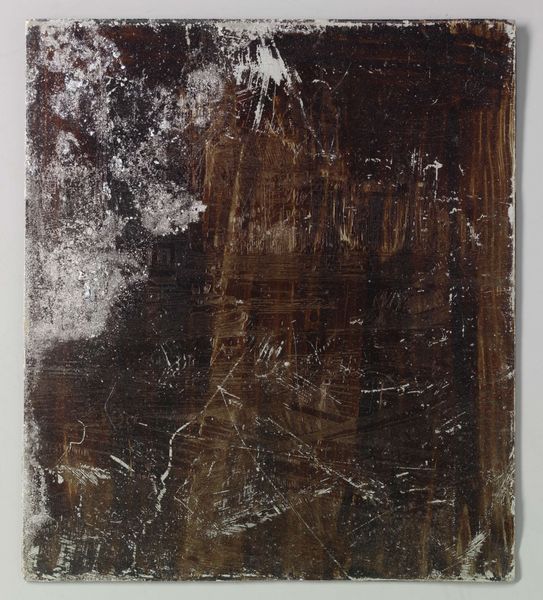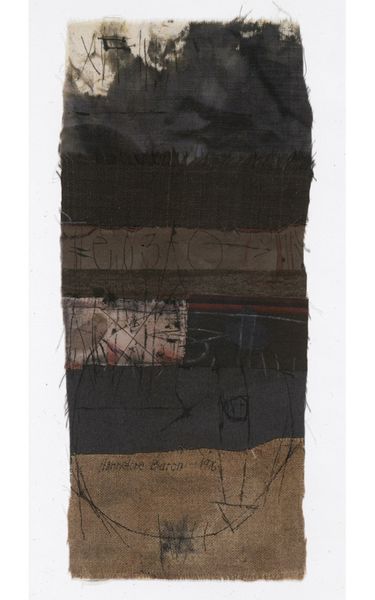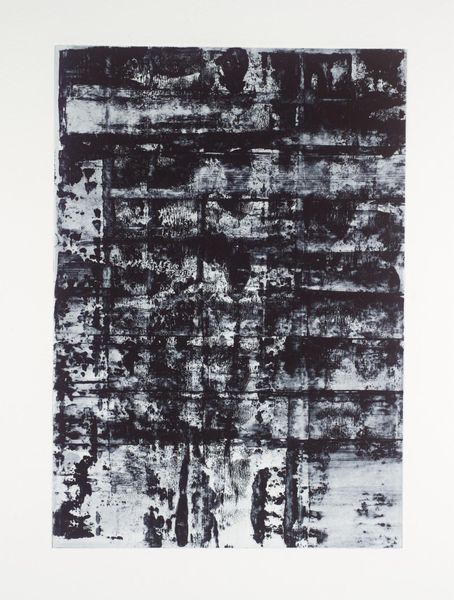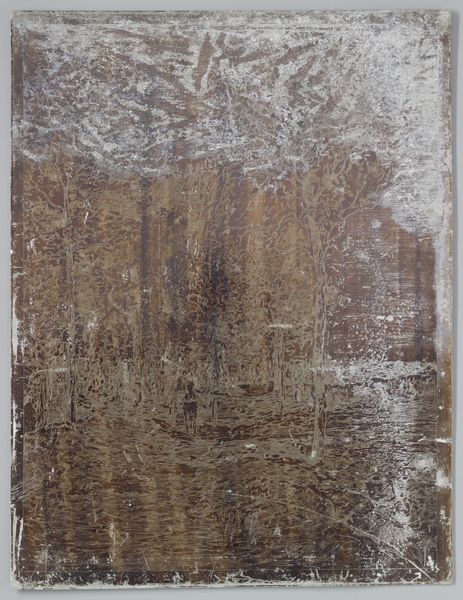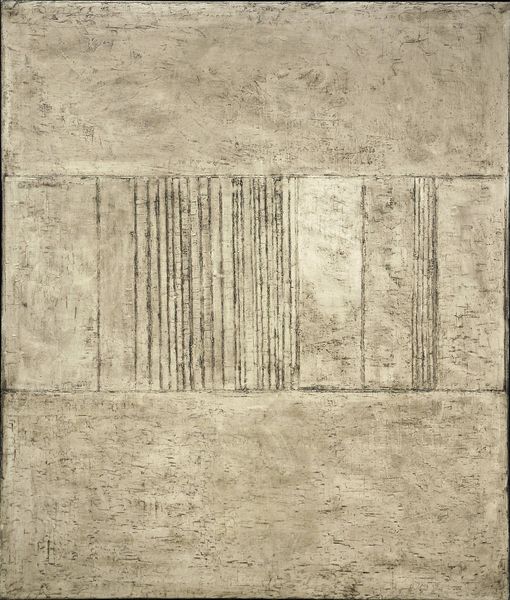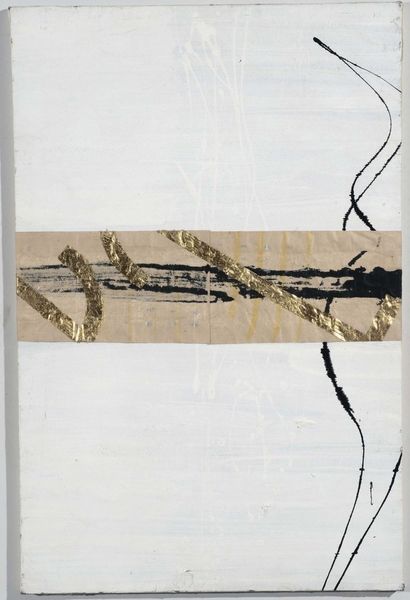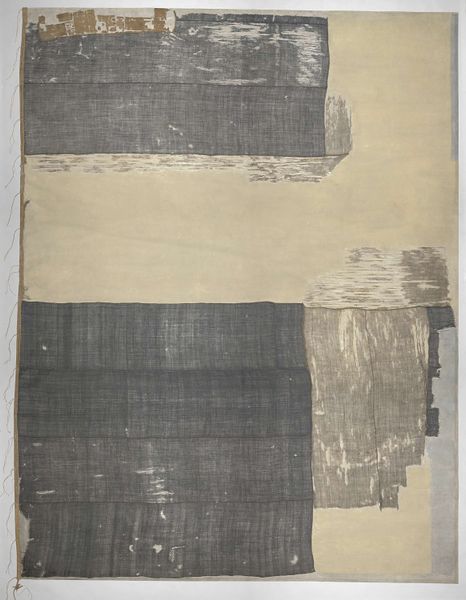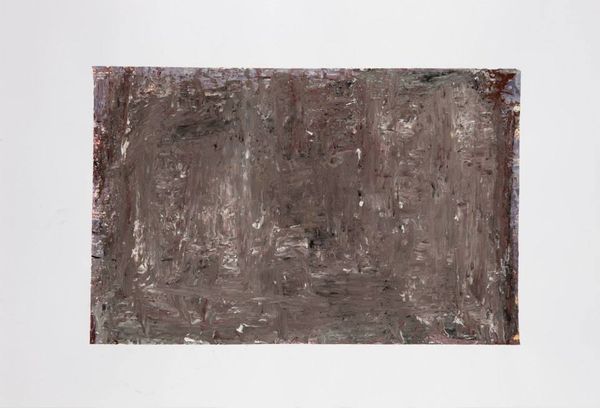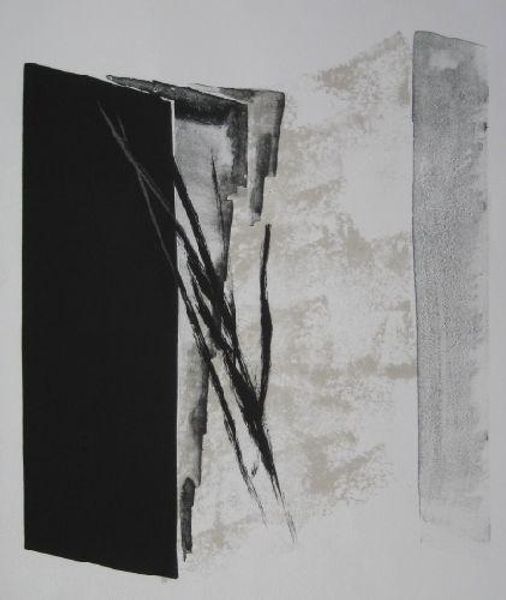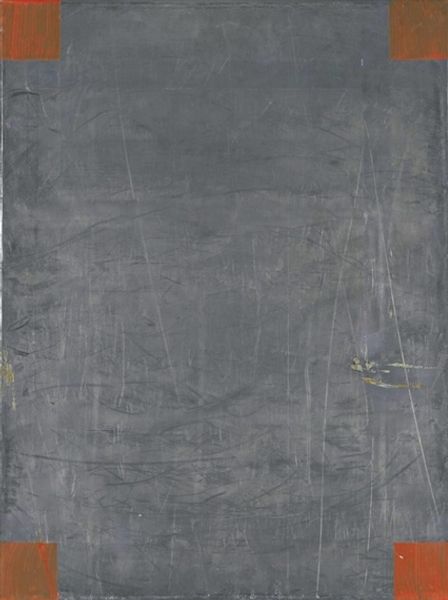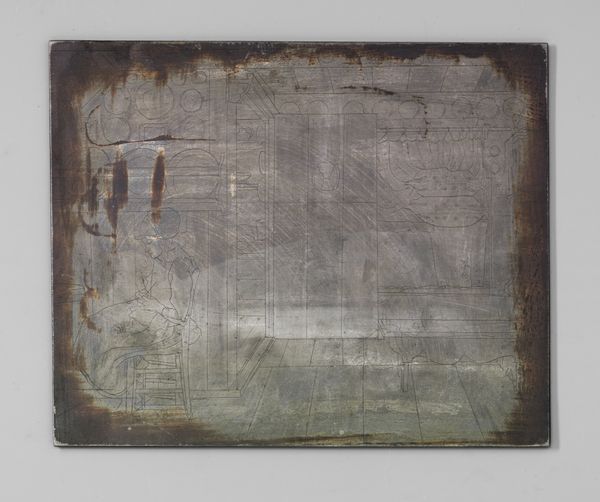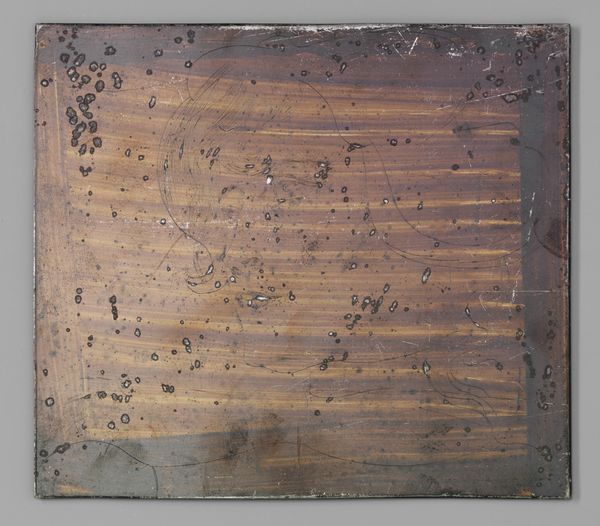
Dimensions: support: 1529 x 2000 x 30 mm
Copyright: © Judit Reigl | CC-BY-NC-ND 4.0 DEED, Photo: Tate
Curator: Here at Tate Modern, we have Judit Reigl's monumental work, "Guano", a striking piece measuring over 1.5 by 2 meters. Editor: It feels ancient, doesn’t it? Like a weathered tablet unearthed after centuries, the horizontal lines reminiscent of faded text. Curator: Reigl’s abstract expressionism emerged in post-war Europe, a period grappling with trauma and redefinition. Her work reflects that search for new forms. Editor: "Guano," even the title suggests layers accumulating over time, perhaps ideas fossilized or transforming into something new. Curator: Absolutely. The term itself refers to excrement, suggesting a process of decomposition and rebirth. Reigl often explored themes of human existence and transformation. Editor: I'm struck by the earthy palette. It speaks of decay but also resilience, a testament to the cyclical nature of existence. Curator: Reigl was a key figure in challenging conventional notions of painting, both in Hungary and later in Paris. Editor: Ultimately, "Guano" prompts us to consider how we build layers of meaning and experience, both individually and collectively. Curator: Indeed, it's a work that invites contemplation on history, memory, and the enduring power of abstract form.
Comments
Join the conversation
Join millions of artists and users on Artera today and experience the ultimate creative platform.
tatemodern 6 months ago
⋮
Reigl put a canvas on the floor of her studio and let paint from works-in-progress fall onto it. This build-up of paint became compacted and developed an extraordinary crust. This created a surface made by chance. Reigl then reviewed it, scraping back the paint and reworking areas. The title, Guano, refers to the faeces of seabirds and bats. Horizontal furrows mark the surface. These might suggest archaeological layering. The textures also evoke urban sites, from modern pavements to ancient walls. This creates a sense of an embedded history in the work. Gallery label, June 2020
